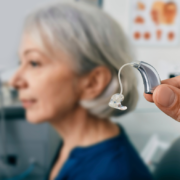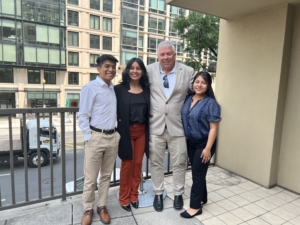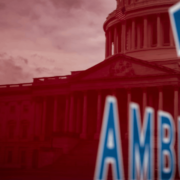Legislation is needed to close the environmental health gaps in the Polluters Pay Principle
By Eric Feigen, NCL Health Policy Intern
Today, more than 40% of Americans live in communities with unhealthy levels of air pollution and every year, millions of deaths and chronic illnesses have been found to be directly caused by various pollutant types. This represents the human cost inherent in environmental degradation. Despite this, policy-makers and regulatory agencies continue to ignore public health consequences when crafting legislation designed to address environmental issues nationwide.
The current approach towards addressing both climate change and environmental damage is rooted in the Polluters Pay Principle (PPP). This commonly accepted practice dictates that those who pollute are responsible for not only abatement costs, but also compensating those adversely affected by their actions. From the Clean Air Act to the more recent Inflation Reduction Act, PPP is the fundamental framework for the majority of environmental legislation in the U.S.
The core mechanism used in PPP is cost-benefit-analysis. Due to the fact that polluters receive a benefit from polluting, in the form of profits, they must correspondingly compensate individuals for the negative externality their pollution creates. For example, paying for a water treatment plant in order to ensure a safe water supply for a community.
One of the most significant externalities of pollution is long-term health conditions. High levels of particle air pollutants are linked to a variety of health issues including asthma, cancer, infant mortality, and premature death. However, as previously mentioned, while 40% of Americans live in places with failing grades in air quality, not all of these individuals have asthma. This illustrates the uncertainty inherent in including the costs to humans’ health in the PPP’s cost benefit analysis. Using this logic, Michigan v. EPA set the precedent for omitting the negative impact polluters have on health from PPP-based calculations.
The Public Health Air Quality Act is one solution to the uncertainty dilemma surrounding pollutants and chronic health conditions. This is because the Act sets thresholds for pollutant levels at the point where the pollutant becomes harmful to human health. In essence, while previous legislation has made polluters pay for the right to pollute, the standards in this legislation will prohibit contamination after the air quality reaches a dangerous level. Furthermore, the Act will also mandate new air pollution monitoring programs and allow the EPA to follow the “precautionary principle”, which errors on the side of safety when determining what levels of pollution may be harmful to humans.
Another arena where PPP must be supplemented is equity. While designed to reduce environmental damage nationwide, PPP fails to address how pollution disproportionately harms Black and Brown communities. An example of this is exposure to PM 2.5, an air pollutant responsible for upwards of 85,000 deaths a year. A recent study highlights that while the Clean Air Act has led to a nationwide decrease PM 2.5 related health conditions, the number of deaths this pollutant causes in communities of color has remained constant.
Climate change and environmental degradation are just as much a public health issue as they are an environmental one. Policy-makers have the obligation to create legislation to supplement PPP policies to mitigate the harm polluters inflict on public health and ensure an equitable approach to environmental regulation and cleanup.

















